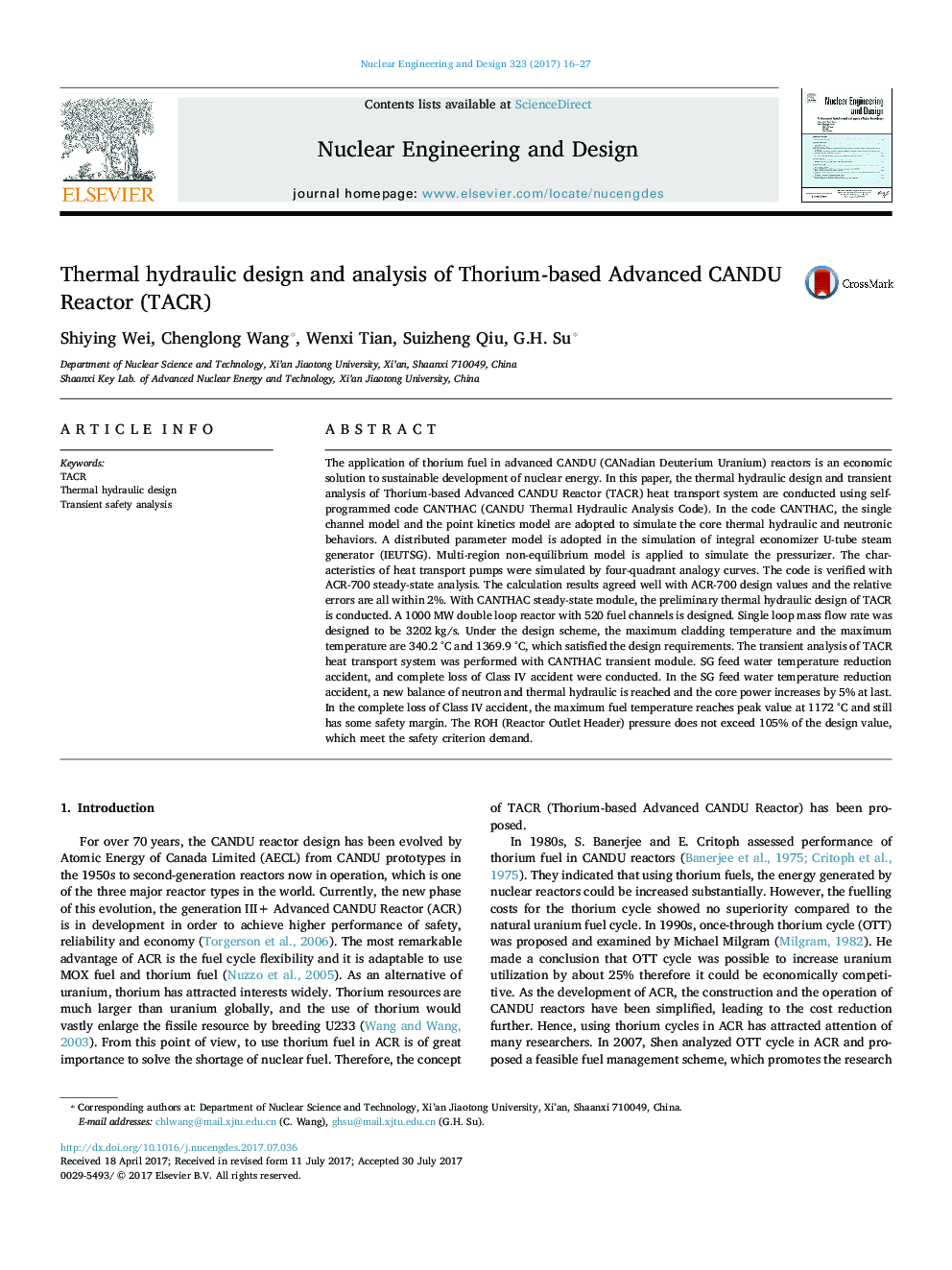| کد مقاله | کد نشریه | سال انتشار | مقاله انگلیسی | نسخه تمام متن |
|---|---|---|---|---|
| 4925436 | 1431398 | 2017 | 12 صفحه PDF | دانلود رایگان |
عنوان انگلیسی مقاله ISI
Thermal hydraulic design and analysis of Thorium-based Advanced CANDU Reactor (TACR)
دانلود مقاله + سفارش ترجمه
دانلود مقاله ISI انگلیسی
رایگان برای ایرانیان
موضوعات مرتبط
مهندسی و علوم پایه
مهندسی انرژی
مهندسی انرژی و فناوری های برق
پیش نمایش صفحه اول مقاله

چکیده انگلیسی
The application of thorium fuel in advanced CANDU (CANadian Deuterium Uranium) reactors is an economic solution to sustainable development of nuclear energy. In this paper, the thermal hydraulic design and transient analysis of Thorium-based Advanced CANDU Reactor (TACR) heat transport system are conducted using self-programmed code CANTHAC (CANDU Thermal Hydraulic Analysis Code). In the code CANTHAC, the single channel model and the point kinetics model are adopted to simulate the core thermal hydraulic and neutronic behaviors. A distributed parameter model is adopted in the simulation of integral economizer U-tube steam generator (IEUTSG). Multi-region non-equilibrium model is applied to simulate the pressurizer. The characteristics of heat transport pumps were simulated by four-quadrant analogy curves. The code is verified with ACR-700 steady-state analysis. The calculation results agreed well with ACR-700 design values and the relative errors are all within 2%. With CANTHAC steady-state module, the preliminary thermal hydraulic design of TACR is conducted. A 1000 MW double loop reactor with 520 fuel channels is designed. Single loop mass flow rate was designed to be 3202 kg/s. Under the design scheme, the maximum cladding temperature and the maximum temperature are 340.2 °C and 1369.9 °C, which satisfied the design requirements. The transient analysis of TACR heat transport system was performed with CANTHAC transient module. SG feed water temperature reduction accident, and complete loss of Class IV accident were conducted. In the SG feed water temperature reduction accident, a new balance of neutron and thermal hydraulic is reached and the core power increases by 5% at last. In the complete loss of Class IV accident, the maximum fuel temperature reaches peak value at 1172 °C and still has some safety margin. The ROH (Reactor Outlet Header) pressure does not exceed 105% of the design value, which meet the safety criterion demand.
ناشر
Database: Elsevier - ScienceDirect (ساینس دایرکت)
Journal: Nuclear Engineering and Design - Volume 323, November 2017, Pages 16-27
Journal: Nuclear Engineering and Design - Volume 323, November 2017, Pages 16-27
نویسندگان
Shiying Wei, Chenglong Wang, Wenxi Tian, Suizheng Qiu, G.H. Su,